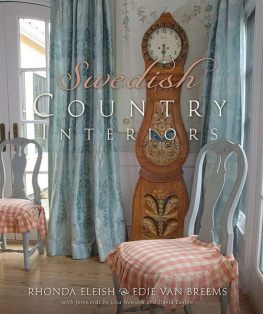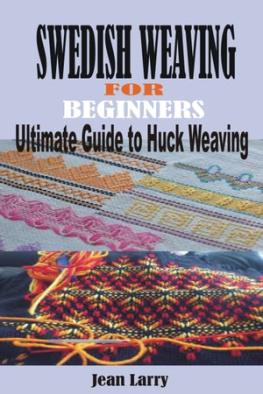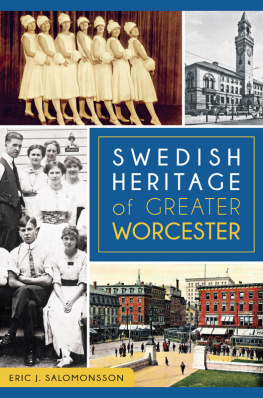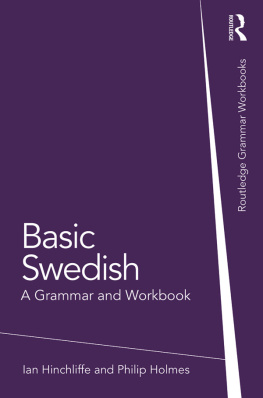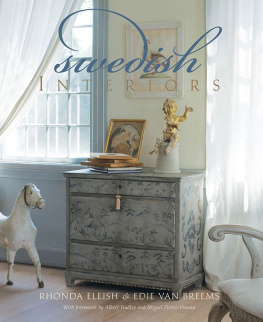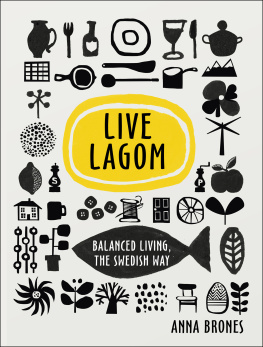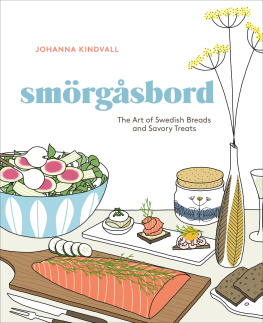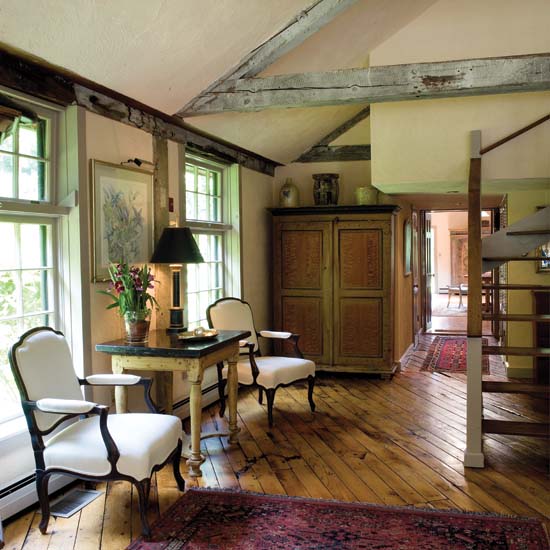Swedish Country Interiors
Rhonda Eleish and Edie Van Breems
Photography by Jon E. Monson and L. Langdon Ergmann

Swedish Country Interiors
Digital Edition 1.0
Text 2009 Rhonda Eleish and Edie Van Breems
Photographs 2009 Jon E. Monson and L. Langdon Ergmann
All rights reserved. No part of this book may be reproduced by any means whatsoever without written permission from the publisher, except brief portions quoted for purpose of review.
Gibbs Smith
P.O. Box 667
Layton, Utah 84041
Orders: 1.800.835.4993
www.gibbs-smith.com
ISBN: 978-1-4236-1242-1
This book is dedicated to my daughter, Kari. My light; my blessing; my raison dtre. Rhonda Eleish
With great love I dedicate this book to my father Van Bernhard. Seeker and builder of dreams, you are nothing less than stanchion, brace, and buttress to mine. Edie Bernhard van Breems
Foreword by Lisa Newsom
I love Swedish style. When I was a child growing up in South Georgia, books and magazines were my windows on the world, and it was through them that I first discovered Sweden. In the beginning, I was drawn to the cooler colors: the greens of nature, the blues of sea and sky, the grays and off-whites of the winter season. That pristine Nordic look was completely different from my surroundings, and I was in its thrall. I still am.
Most of us think of Swedish style as simple, elegant Gustavian furnishings in spare rooms with pale colors that reflect light during long, dark days. This interior expression can be traced to King Gustav III, who reigned in Sweden from 1771 to 1792. He toured France and Italy, admired the classical style revival, and encouraged a distinctive Swedish interpretation of the look when he returned. I like to think of him as an editor like me, someone who reviews carefully and selects the best.
Over the years my appreciation has grown to embrace the warmer colors of Swedish dwellings and barns in the countryside painted the traditional Falun red or yellow ochre, the untreated wooden structures weathered a rich brown, and the heartfelt charm of folk art and furnishings.
In 2002, I visited Sweden for the first time and was transfixed. On that trip, all the images I held dear came to life in breathtaking beauty, and the people were gracious and welcoming. Lars Sjberg, Swedens passionate authority on eighteenth-century decorative arts, picked me up at my hotel to show me some of his nine restored historic houses. He was as casual as a next-door neighbor and had antique chairs strapped to the top of his Volvo. I realized he really represents the Swedes, from aristocrats to intellectuals to everyday folk, as egalitarian, relaxed, nature-loving people who dont like fussy furnishings, homes, or lives, but who seem to have innate good taste and style. Their way of looking at life resonates with many of us, and we create interiors reflecting that sensibility. Over the years, Veranda has featured many Swedish and Swedish-inspired interiors.
Rhonda Eleish and Edie van Breems, in their second book devoted to Swedish interiors, continue to share, through evocative images and knowledgeable text, their love of Swedish style from Gustavian to rustic. This book will become a cherished reference companion to their first, Swedish Interiors.
I have passed on my love of Sweden to my children. Their interiors, like so many today, vary from Continental to contemporary, but each incorporates Swedish antiques and colors in juxtapositions that are at once comfortable and sophisticated, reflecting that very special Swedish grace celebrated in this inspiring volume.
Foreword by David Easton
My first encounter with Swedish furniture was as a young designer. At that time, I had been to Europe on a scholarship and returned to work for Edward Wormley, a well-known furniture designer in New York City. Browsing one day at a neighborhood shop, Beekman Books, I found a three-volume set of books on classical Swedish furniture. These books, which I still have to this day, deeply impressed me, greatly affected my ideas about furniture design, and enriched my design soul. This prompted my travel to Sweden to see Swedish design firsthand.
Along the way, I had the chance to spend time with people who aided in my Swedish education. A wonderful friendship, both personal and professional, was with Merrill and Jan Stenbeck, clients whom I worked for in New York City and also on Long Island. I traveled down to their house in the Archipelago, where I met other friends and got to see their homes and the simple, yet elegant way that people lived in the countryside. When in Stockholm, I stayed at The Greenhouse, their wonderful hotel. Through Merrill and other friends, I met Lars Sjoberg, art historian, curator, and author. More recently, on a trip to Stockholm with friends, I revisited the Haga Pavilion, which was built in the seventeenth century by King Gustav III. The classical symmetry and simplicity of its design is timeless and ageless.
When King Gustav III made his grand tour through the courts of Europe, it left a lasting impression. Upon his return to Sweden, he, along with the architect Olof Tempelman, designer Louis Masreliez, and Swedish craftsmen, were responsible for creating this pavilion that adapts the grand style of the European courts. Its final effect is one of a comfortable, charming, and more simple adaptation, appropriate to Sweden and the economy of the time. This translates well to the way we live now. My feeling about this small, delightful pavilion overlooking a lake is that it exemplifies the beauty and integration of Swedish architecture, decoration, and furnishings. It is as elegant in its provincial way as the period design created in France, Italy, and Russia. This principle of simplification of design also relates to the modern world we live in today.
Vitruvius, in the first century AD, said the principal ideals of great architecture were commodity, firmness, and delight (which can be translated as functionality, structural integrity, and aesthetic value). These principles still hold true, and Swedish furnishings and architecture exemplify these ideals.
Swedish furniture is unique and that is due to its simplification of detail, softer lines, simple wood, and painted finishes. This simplification of form and finish makes it equally as beautiful as any piece of furniture that the Continental or Russian courts and craftsmen created during the same period.
In this age of metal, glass, and concrete, it is important to draw upon the past to understand how it affects the way we live and design our homes today. What is relevant to design today is the simple elegance of Swedish style. As Mies van der Rohe said at the beginning of the twentieth century, less is more and that is exactly why Swedish furniture does not lose its appeal.
The homes that are featured in Swedish Country Interiors illustrate how universal and adaptive the Swedish style is. There is an enduring, timeless quality of the simple Swedish style that continues to speak to us all today.
Preface
Welcome! Swedish Interiors , our first book, was an overview of the history of Swedish design and how various homeowners and designers have been inspired to use those design elements in their homes. In this book, we are thrilled to have the opportunity to delve further into one style of Swedish designSwedish country interiorsa subject most close to our hearts. As antiques dealers specializing in Swedish eighteenth- and nineteenth-century furnishings, we have had the pleasure to travel Sweden extensively. In our journeys over the past ten years, we have found ourselves not only inspired but fascinated by the strong beauty of antique Swedish country furnishings and the rhythms of a long-ago way of life. Interviews with Swedish farmers, reminiscences with elderly Swedish relatives, research at the Nordic Museum, and visits to Skansen (Stockholms open-air museum) served to whet our appetites for more knowledge of Swedish country furnishings and design. Before we knew it, we had become obsessed with not just furniture but every dust-covered tool we stumbled upon from this vibrant pre-twentieth-century flax-and-milk-based culture. We spent long hours hand-mixing pigment paints and learning the secrets, frustrations, and joys of working with natural Swedish materials as we attempted to incorporate what we had seen in Sweden into our own homes and our store, Eleish Van Breems Antiques.

